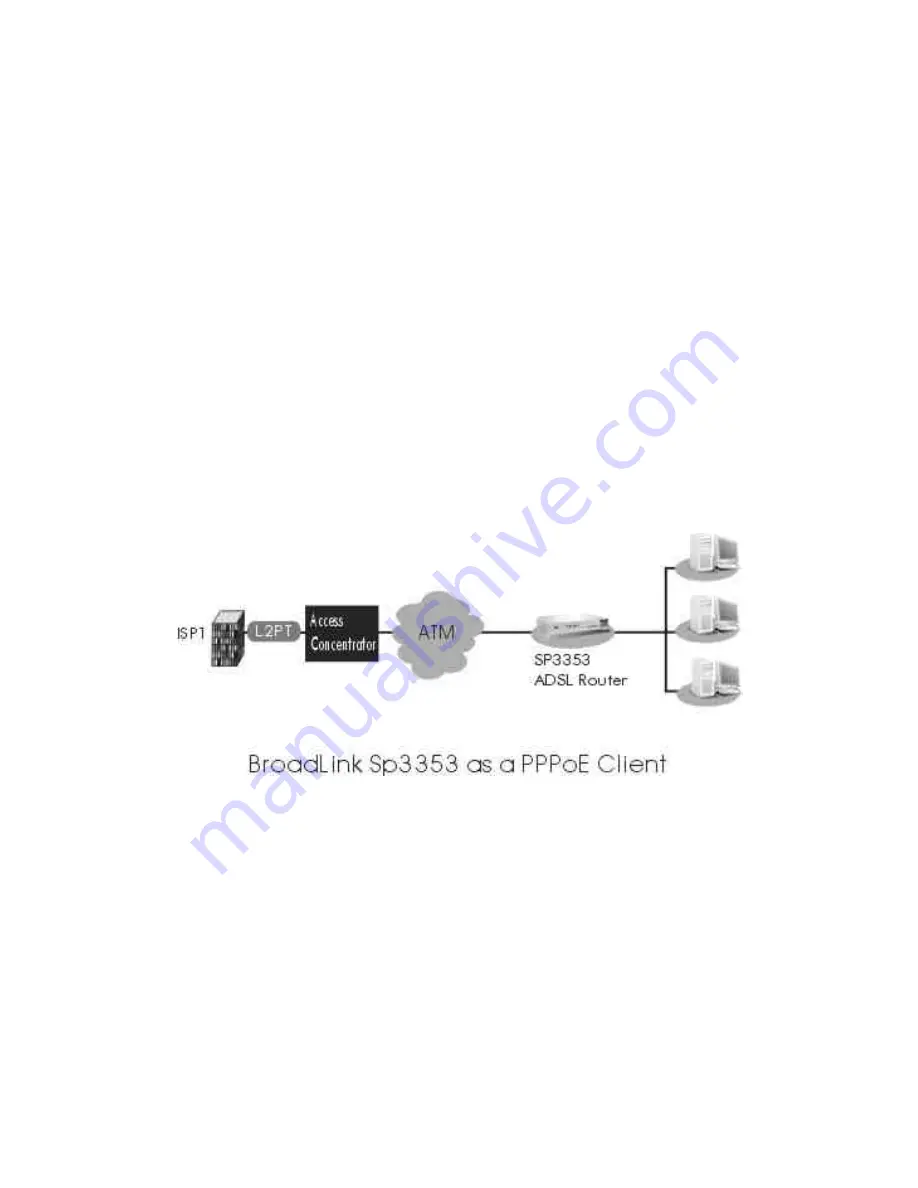
15
What is PPPoE?
PPPoE (Point-to-Point Protocol over Ethernet) emulates a Dial-Up connection. It
allows your ISP to use their existing network configuration with newer broadband
technologies such as ADSL. The PPPoE driver on Micronet SP3353 is transparent
to the PCs on the LAN, which see only Ethernet and are not aware of PPPoE thus
saving you from having to manage PPPoE clients on individual PCs.
An ADSL modem bridges a PPP session over Ethernet from your PC to an ATM
PVC (Permanent Virtual Circuit), which connects to a xDSL Access Concentrator
where the PPP session terminates (see the figure below). One PVC can support
any number of PPP sessions from your LAN. PPPoE provides access control and
billing functionality in a manner similar to dial-up services using PPP.
Like the architecture shown above, the PPPoE driver makes the Ethernet appear
as a serial link to the PC, while the modem bridges the Ethernet frames to the
Access Concentrator (AC). Between the AC and an ISP, the AC is acting as a L2TP
(Layer 2 Tunneling Protocol) LAC (L2TP Access Concentrator) and tunnels the
PPP frames to the ISP. The L2TP tunnel is capable of carrying multiple PPP
sessions. With PPPoE, the VC (Virtual Circuit) is equivalent to the dial-up
connection and is between the modem and the AC, as opposed to all the way to
the ISP. However, the PPP negotiation is between the PC and the ISP.






























